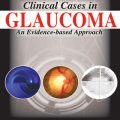The Intentional Relationship: Occupational Therapy and Use of Self, 1e
by Renée R. Taylor Page
Product Details:
- Paperback: 480 pages
- Publisher: F.A. Davis Company; 1 edition (January 7, 2008)
- Language: English
- ISBN-10: 0803613652
- ISBN-13: 978-0803613652
- Amazon Price: $62.95
- Points to download: 100 Points
- Format: Original Publisher PDF
- File Size: 4.9 MB
- Download link below.
Download Link:
This post contains protected content. You must be logged in and have 100 points to unlock it.
Description:
“Right on target. Innovative, nothing comes near it in occupational therapy. A sophisticated meld of occupational therapy and psychology. It is very innovative for occupational therapy and other fields. I am thoroughly impressed.”
“I have found no occupational therapy book more interesting to me than this one. I always have to go outside of the field to find such rich and interesting material.”
—Sharan Schwartzberg, EdD, OTR, FAOTA,
Tufts University, Boston, Massachusetts
This groundbreaking new book addresses a critical aspect of the occupational therapy practice—the art and science of building effective, fulfilling relationships with clients.
A distinguished clinician and educator, Renee Taylor, PhD, uses a new conceptual practice model, the Intentional Relationship Model, to define how the client and the therapist each contribute to the unique interpersonal dynamic that becomes the therapeutic relationship. She emphasizes how therapists must act deliberately, thoughtfully, and with vigilant anticipation of the challenges and breakthroughs that have the potential to influence the course of the relationship.
Actual case examples from 12 exceptional clinicians from around the world illustrate how this model is used to address many of the challenging interpersonal situations that commonly occur in therapy. And, guided exercises and assignments help readers master the skills they need and apply them to a wide range of clinical situations and presenting problems.






























